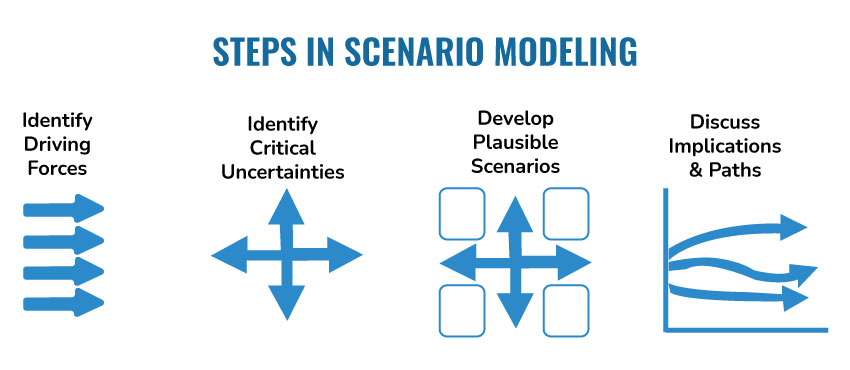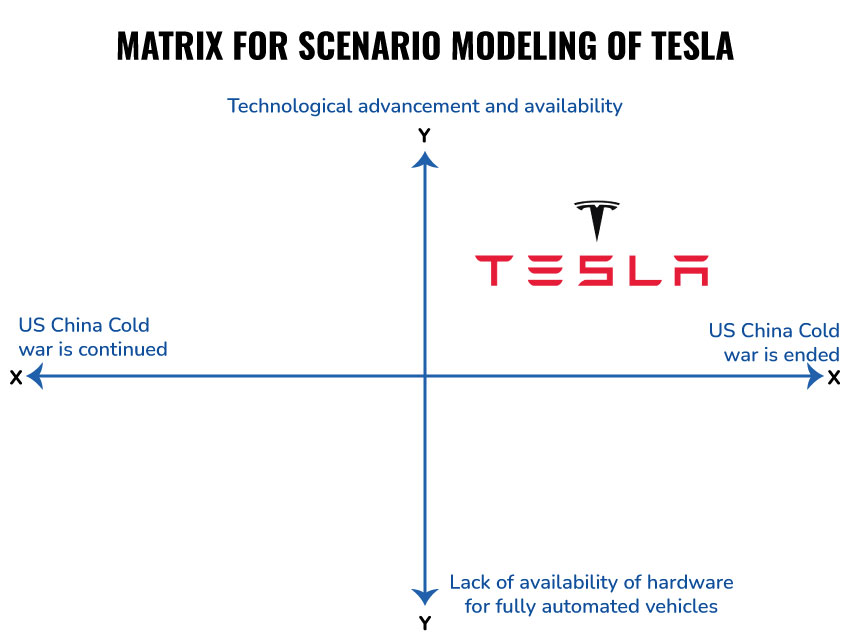Table of Content
Introduction to Scenario Modeling
Scenario-based Modeling examines the range of the situations and makes assumptions on the future situations in the organization. The key focus of the scenario model is on determining how the business environment will change if some event takes place. The focus of Scenario Modeling is on analyzing the specific set of uncertainties to predict the future state of the organization. This sounds very simple but scenario planning and management are some of the most difficult situations for the organization. The Scenario Modeling focuses not only on analyzing the possible scenarios and uncertainties but also helps in strategic planning considering the market uncertainties.
This sounds very simple but scenario planning and management are some of the most difficult situations for the organization. The scenario model focuses not only on analyzing the possible scenarios and uncertainties but also helps in strategic planning considering the market uncertainties.
The need for the Scenario Modeling
Business organizations are required to make the best decisions out of the available alternatives to ensure business success and growth. This is possible for the organization only by considering the external market conditions and predicting the business situations. Thus, the organizations use the Scenario Model which involves looking at the external factors of the organization including demographic, political, regulatory, and economic to determine different scenarios that can impact the organization and to evaluate the impact of such scenarios on the overall working of the organization.
In this strategic planning model, organizations determine the strategies that are required to be adopted by the organization to address different situations. For each scenario, there exist three possibilities which include best-case scenario, reasonable case scenario, and worst-case scenario. After looking out the potential impacts of each scenario, the organization brainstorms and figures out the ways to effectively respond to each scenario. This model is mainly useful for the organization that needs planning for various situations. For instance, the farmers use the strategic scenario planning model to predict the future harvests which then base the investment decisions of the farmers.
The use of the Scenario Modeling may not result in magnificent consequences for the organization but if the Scenario Modeling is not done in the organization, it can lead to increased business risks, higher cost, and missed opportunities.
How to apply the Scenario Modeling?
The idea for the application of the Scenario Modeling looks very simple but we need to consider the steps that can be implemented to engage in the scenario planning.
There are four steps involved in the scenario modeling which include determining the driving forces, identifying critical uncertainties, planning the range of the plausible scenarios, and discussing implications of different situations.

- The driving forces in the organization can be determined on the basis of consideration of various external market factors impacting the operations of the organization. This further is possible through the use of the PESTLE or other external market analysis model.
- After determining the driving forces, the two of the most impacting factors having the greatest impact can be picked up. Now, you are thinking about how the two factors can be factors that can be selected out of the plethora of driving forces being derived from the PESTLE analysis model.
- The third step that is followed in the application of the Scenario Modeling is developing plausible scenarios on the basis of the two impactful factors chosen in step 2. This step involves plotting the plausible scenarios on the graph with the x and y-axis.
- The last phase of the Scenario Modeling is analyzing the implications of the four different scenarios for the company. After discussing the implications of each scenario, the organization also needs to consider the strategies that can be implemented to prepare for reality.
Scenario Modeling real example
Speaking of exemplification of the implementation of this model, Tesla Scenario Modeling will be a perfect example to illustrate the implications of this planning model.
The first step in the application of the Scenario Modeling is to identify the critical uncertainties on the basis of the results of the PESTLE analysis. Suppose, through the PESTLE analysis, it is found that the major driving factors include the US-China cold war, lack of technological advancement, up to $ 7500 of tax credits by the federal government for the purchase of the electric plug-in vehicle, implementation of FAME II program, declining US GDP, rising fuel prices, increasing concern for sustainability and implementation of new rules and regulations.
The two major risks and uncertainties that can be faced by Tesla include negative impacts associated with the US-China cold war and the lack of effective hardware and technology available to the company to facilitate fully autonomous driving cars.
The third step includes developing a range of plausible scenarios by forming a matrix. The matrix for the plausible scenarios for Tesla is shown as follows-

Now, determining the scenarios is not enough for Tesla as it is necessary to determine the expected implications of these scenarios so that needed strategies are implemented. The rising US-China Cold war can cause suspension of various production activities in China and rise in the cost of import and export of various goods whereas the end of the US-China war can result in higher import and export of various products between the US and China leading to higher growth of Tesla with continuity of production activities in China. The other scenario i.e. limited infrastructure and technology for facilitating high-quality autonomous driving cars can lead to a decline in the competitive position of Tesla and a decline in its brand image whereas the availability of infrastructure and technology for facilitating high-quality autonomous driving cars can result in higher demand for Tesla cars.
To deal with these issues, Tesla needs to pre-plan various strategies. Tesla can expand locally or in other international markets to deal with the impacts of the US-China cold war. Tesla can also plan to invest in technology and infrastructure to manufacture high-quality self-driving cars and to maintain its competitive position in the industry.
Thus, the use of the Scenario Model can help Tesla to deal with various business uncertainties effectively by forecasting various business situations and planning various strategies to deal with future business situations.